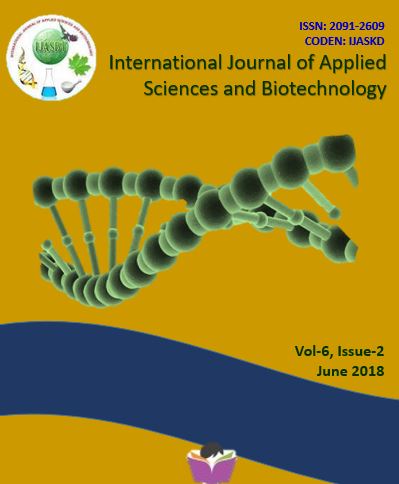Sanitary Diagnosis of Cotton Cultivation in the West Central Region of Cote D'ivoire
DOI:
https://doi.org/10.3126/ijasbt.v6i2.20430Keywords:
cotton cultivation, healthy seedlings, seedling blight, virescence diseaseAbstract
In order to contribute to cotton cultivation sustainability in west central Côte d'Ivoire, a phytosanitary diagnostic study was conducted in 11 plots. It consisted of monitoring the sanitary condition of 10 rural plots and an experiment plot set up at the Research Farm of University Jean Lorougnon Guédé of Daloa according to the regular and careful inspection of cotton seed germination, seedling health and cotton plants throughout the growing season. The results obtained indicated that the cotton varieties used by farmers had very low germination with maximum number of healthy seedlings of 43.75 % in an experiment condition. Highest number of infected seedlings (24-51%) showing characteristic symptoms of seedling blight leading to their death was observed. Under cultivation, a variety of pests was identified on cotton plants. The most important were Bemisia tabaci, Jacobiella fasciali, Helicoverpa armigera, Dysdercus sp, Earias sp, Zonocerus Variegatus, Haritalodes derogata. The Species Zonocerus Variegatus and Haritalodes derogata proved to be devastating on the experimental plot where 100% loss was recorded. The main disease observed at flowering stages in cotton plants was cotton virescence disease. Although lowly infection were observed (0.11 -0.35%) cotton cultivation monitoring and management must be set up so as to prevent its expansion in the west central. Theses finding gives useful information to farmers to reduce cotton yield losses in west central Côte d'Ivoire.
Int. J. Appl. Sci. Biotechnol. Vol 6(2): 152-157




